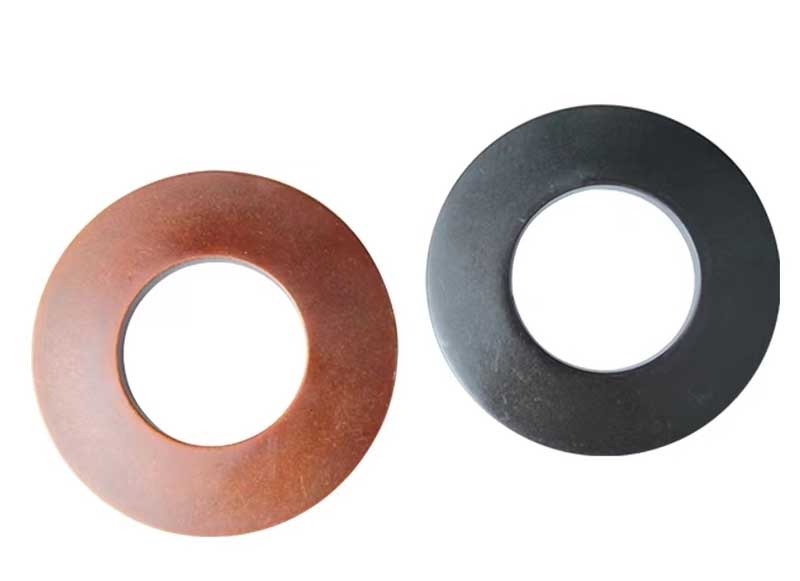What are Disc Springs: A Comprehensive Guide
الجسم
Disc springs, aptly named for their bowl or dish-like shape, are integral components in various maritime, industrial, and mechanical applications. Comprising four key parameters—outer diameter (D), inner diameter (d), thickness (t), and height (H)—these washer-type springs exhibit a truncated conical section and are crafted from metal sheets or forging blanks.

Principle of Disc Spring:
The fundamental principle behind disc springs involves their function as conical annular discs bearing axial loads. Typically, the disc thickness remains constant, with the load evenly distributed on the inner edge of the upper surface and the outer edge of the lower surface. Constructed from spring steel, disc springs excel in withstanding static, impact, or dynamic alternating loads, meeting stringent requirements for fatigue life.
Types of Disc Springs:
Anti-loose Disc Spring:
Application: Ideal for bolts subject to severe vibration but not under excessively large loads. Effectively prevents bolts from loosening and reversing, ensuring lasting and reliable sealing. Versatile for various bolt and equipment configurations.
High-Temperature Preloaded Disc Spring:
Application: Suited for bolt preloading in high-temperature environments, such as flanges, pipe flanges, valves, and heat exchangers. Especially valuable in applications with temperature differences exceeding 100°C.
High Torque Preloading Disc Spring:
Application: Applied in scenarios demanding substantial load and torque, such as pre-tightening valve and pipe flange bolts. Used in diverse engineering applications involving anchor bolts, fans, pumps, centrifuges, heat exchangers, reactors, agitators, generators, pipe supports, and hanger devices.
Buffer Tension Disc Spring:
Application: Widespread use in various industries, including brakes, safety overload devices, mechanical starters, industrial furnaces, clutches, molds, and more.
Advantages of Disc Springs Compared to Other Springs:
Space Efficiency:
Disc springs bear substantial loads in minimal space, making them efficient in applications with spatial constraints.
Variable Stiffness:
By altering the ratio of the inner cone's height to the disc thickness, disc springs exhibit variable stiffness characteristics, providing flexibility in spring curves.
Different Bearing Capacities:
Varying the number or combination of discs enables obtaining different bearing capacities, facilitating adaptability to a wide range of applications.
Long Service Life:
Correctly designed and manufactured disc springs boast a prolonged service life, contributing to their reliability in diverse settings.

How to Select Disc Springs:
When choosing disc springs for specific applications, several factors come into play:
Load Size and Characteristics:
Consider the magnitude and nature of the load, including static, impact, or dynamic loads.
Working Temperature:
Select disc springs suitable for the working temperature range, accounting for variations up to 600°C.
Equipment Working State:
Assess factors such as pre-tightening, stroke, vibration, pulse pressure frequency, and pre-tightening force.
Medium Corrosivity:
Evaluate the corrosivity of the working medium and the pH value, as these factors influence disc spring selection.
Pressure:
Different working pressures in pipes produce varying pulse pressures and thermal expansion and contraction, influencing disc spring selection.
Conclusion:
The versatility, efficiency, and durability of disc springs make them indispensable in a myriad of applications. Whether serving as strong cushioning devices or as components in safety valves and clutches, disc springs continue to play a vital role in diverse industries, offering small deformations, high loading capacities, and extended service lives. As their usage expands, understanding the selection criteria becomes crucial for optimizing their performance in various operational environments.








تعليقات